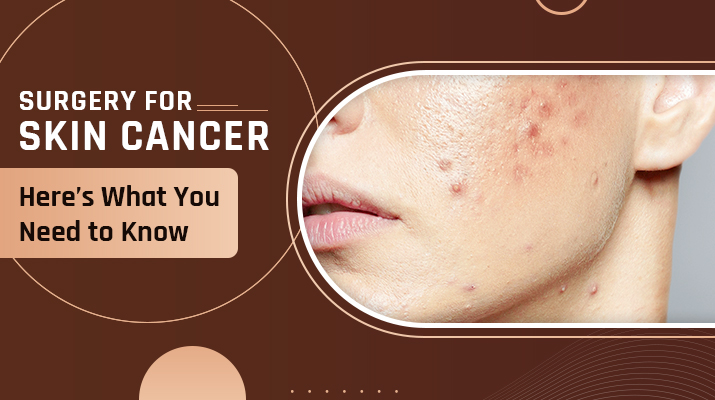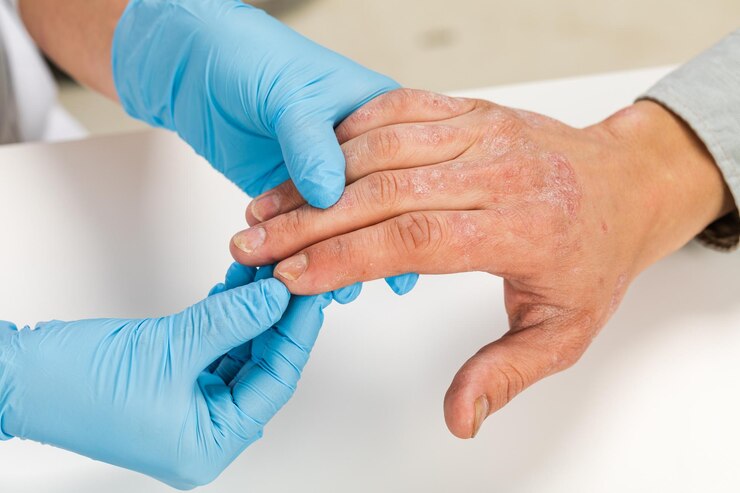
The words ‘you have skin cancer’ aren’t easy to hear. And despite it happening to millions of people every year, confronting this disease can be difficult for even the heartiest of souls. But knowledge is power and having a firm grasp on your condition and how best to treat it is crucial to achieving desired results.
Skin cancer is one of the most common forms of cancer and typically occurs in areas of the skin that see prolonged exposure to sunlight. It comes in several forms, such as squamous and basal cell carcinomas, and their treatment varies wildly depending on the type.
Winston Salem Dermatology is dedicated to providing you with crucial information about your condition and the treatment plans surrounding them. As such, we’ll dive deeper into the various forms of skin cancer, their treatments, and what you need to know to maximize your results.
Five Things to Know if You’ve Been Diagnosed with Skin Cancer
As we’ve mentioned, one of the best ways to fight against any form of carcinoma is to have extensive knowledge of the condition and the best treatment techniques. So let’s dive right into the things you’ll want to know and the questions you’ll need to ask.
1. Understand the Type of Skin Cancer You Have
There are many forms of skin cancer, and not all are created equal. You have:
• Basal Cell Carcinoma
The most common form of skin cancer, basal cell carcinoma, typically develops in those with fairer skin tones. It often looks like a flesh-colored growth that is pearl-like in appearance. Basal cell carcinoma usually develops after years of frequent sun exposure.
• Squamous Cell Carcinoma
Squamous cell carcinoma is another common form of skin cancer that typically appears as red scaly patches or sores that heal and reopen. It tends to form on the skin with frequent sun exposure, such as the ear, face, neck, and chest. Early diagnosis of this disease can prevent cancer from spreading to other regions of the body.
• Melanoma
Often reputed as the most severe type of skin cancer, melanoma can develop as moles or sudden dark patches on the skin. Early diagnosis of this condition is crucial as it is known to spread quickly.
2. Seek a Second Opinion
The first step of identifying skin cancer involves taking a tissue sample. While in most cases, your pathologist will be sure about the results of a biopsy, this is your health we’re talking about here. So, there is no reason not to seek a second opinion, especially if your biopsy results are inconclusive.
3. Seek Out a Board-Certified Dermatologist
Another way to ensure you get the necessary results is to speak with a trained, board-certified dermatologist. Not only will they be able to help diagnose the condition, but they will also be able to suggest a suitable treatment plan for your particular needs.
4. Ask About Options
Depending on your type of skin cancer, there are several treatments available. First, you’ll want to consult with your dermatologist to determine which is right for you. Some patients will need to undergo Mohs surgery, where thin layers of cancerous skin are removed, leaving behind non-cancerous cells. However, every patient is different and will require varying treatments.
5. Seek Comprehensive Care
In some cases, your skin cancer might require the expertise of several specialists. For example, if the affected region is on your face, you might need the assistance of a plastic surgeon. Or you may need to consult with an ocular surgeon to handle skin cancer near or around the eyes. A consultation with your dermatologist should be enough for you to develop a strategy and involve the necessary professionals.

Different Treatments for Skin Cancer
Surgery may be an effective option if your dermatologist has determined that your cancer has not spread. For aggressive skin cancers like melanoma, more extensive procedures might be necessary.
Some surgical procedures include:
1. Excision
An excision procedure will require a surgeon to remove a growth from the skin by cutting or shaving. Surgeons will perform one of several excision procedures:
• Simple Excision
A simple excision involves using a scalpel or sharp utensil to cut and remove a skin growth, along with a small perimeter of the tissue surrounding it. For these procedures, a local anesthetic is applied to the surgical site.
• Shave Excision
Shave excision is a procedure where growth is shaved away from the skin’s surface using a razor.
• Wide Excision
Typically used for forms of melanoma or Merkel cell carcinomas, a wide excision involves the removal of a skin tumor along with a more extensive perimeter around it. This type of procedure may penetrate deeper into the skin than a simple excision.
2. Mohs Surgery
Dating back to the 1930s, this technique is aimed at removing skin cancer tumors while preserving as much surrounding tissue as possible. It works by removing skin layer by layer until the skin cells show no signs of a cancerous presence. This process is often used on portions of the skin that are more visible, such as the neck, hands, or head. Scarring with Mohs surgery is possible.
3. Curettage and Electrodessication
For this procedure, skin cancer cells are removed using a curette or a thin surgical instrument consisting of a sharpened hoop used for scraping. As this tool scrapes, the skin is exposed to an electrical current through an electrode. This process is known as electrodesiccation, a technique that kills remaining cancer cells while reducing blood loss.
4. Cryosurgery
Typically used for pre-cancerous tissue and smaller-sized cancers, cryosurgical procedures use liquid nitrogen to freeze cancer cells on the skin. This procedure often requires a local anesthetic and can result in scarring, but it is capable of being repeated as necessary.
5. Photodynamic Therapy
This technique works by applying a light-reactive chemical to the cancerous site. Cancer cells and pre-cancerous cells will absorb the chemical and, when exposed to intense light, will die, leaving healthy skin cells unharmed. Photodynamic therapy (PDT) is typically used for basal cell carcinomas and squamous cell carcinomas.
6. Chemotherapy
The most well-known treatment for cancer by far, chemotherapy works by injecting anti-cancerous drugs that then attack cancer cells. Due to the nature of this procedure, chemotherapy can also be effective at treating cancer that may have spread to other regions.
Additional Treatment Options for Skin Cancer
Outside of surgical procedures, several less invasive techniques are known to be effective. These include:
1. Topical Medications
Topical skin cancer medications are known to be effective at treating basal cell and squamous cell carcinomas. When applied topically as a gel or cream, these medications can limit cancer cells’ ability to multiply and grow. For this procedure, the medication is applied to the tumor site several times daily or weekly.
2. Radiation Therapy
Radiation therapy involves using high-energy light beams directed at the tumor site to destroy cancer cells. It’s known to be effective at treating several forms of skin cancer, including basal cell carcinoma, squamous cell carcinoma, and malignant melanoma. Despite being an effective treatment, radiation therapy is known to come with potential side effects such as:
• Fatigue
• Nausea
• Hair loss
• Skin issues
3. Immunotherapies
Immunotherapy uses biological materials to supercharge your body’s immune system. For example, the immunotherapy drug Opdivo targets specific proteins known as PD-1 that are responsible for inhibiting your immune system from attacking cancer cells. With this protein blocked, your body’s natural defenses can attack cancer cells, reducing the presence of cancer in your body.
4. Targeted Therapy
A more precise approach for those diagnosed with melanoma cases that can’t be removed, targeted therapies seek specific genes and proteins of cancer cells and mutate them. For example, this technique can target BRAF inhibitors, a mutated gene in melanoma cells. By altering this gene, cancer cells will begin producing a modified version of the BRAF protein, allowing your body’s natural defenses to limit their production.
Tips for Caring for Your Skin During Cancer Treatment
Cancer is hard on the body. And many skin cancer treatments can be just as tough on your skin. As a result, the skin may become reddened and inflamed with itching and dry patches. But taking care of your skin and developing a gentle routine can do wonders for mitigating side effects. Let’s take a look at just a few:
1. Go easy on your skin.
Skin can be sensitive, even for those not undergoing cancer treatments. But for those experiencing skin care issues during their treatments, being gentle and taking care of your skin is critical. As such, you’ll want to avoid scratching or rubbing the skin, and you’ll need to avoid wearing coarse fabrics that might cause irritation.
This also includes the use of chemicals on the skin. Avoid using perfumes or alcohol-based fragrances, and regularly use hypoallergenic moisturizers to keep your skin hydrated.
2. Drink plenty of water.
Since our bodies are made up of water, it makes sense that you’d want to remain hydrated. Not only will it make a huge difference in how you feel and heal, but it will also directly impact the quality of your skin.
3. Stay out of the sun.
Harmful UV rays are not only responsible for many skin cancer cases, but they can also be quite unhelpful for those going through cancer treatments. Therefore, you’ll want to avoid exposing your skin to the sun for extended periods. This may require you to wear larger hats and longer clothing to minimize exposure.
4. Care for fingernails and toenails.
Skin cancer treatments are known to have an adverse effect on nail production. As such, you may encounter issues with your nails weeks or months into your treatment. This can involve the skin around your fingernails becoming brittle, ingrown nails, and more. To mitigate this, you’ll want to keep your hands and feet moisturized and avoid using fake nails or chemicals on your extremities.
5. Pressure wounds.
If your skin cancer treatment requires you to spend ample time in a bed or in a sitting position, you may develop pressure ulcers. Also known as bedsores, these sores can be minimized by movement and shifting your weight from one area of the body to another.
6. Alert doctors if you experience burning or pain during chemotherapy.
Some chemotherapy drugs can cause pain, itching, or burning if applied to the skin. As such, you’ll want to inform your caregiver if you experience any pain or discomfort during your chemotherapy treatment.
Think You Might Have Skin Cancer? Winston Salem Dermatology Can Help!
With over 3.5 million Americans affected yearly, skin cancer is one of the most prevalent forms of cancer in the US. And while it can be a scary experience for many people, modern techniques make skin cancer one of the most treatable forms of cancer.
Early identification of skin cancer is the most crucial part of the process.
With years of experience helping patients diagnose and treat multiple forms of skin cancer, Winston Salem Dermatology is your trusted skincare expert. We’re proud to offer a wide selection of non-invasive and surgical treatments for basal cell carcinoma, squamous cell carcinoma, and melanoma, to name a few.
If you’re concerned about a bump, mole, or mark on your skin, give us a call at (336) 774-8636 . Our board-certified dermatologists can help you quickly identify and treat skin cancer before it spreads.

